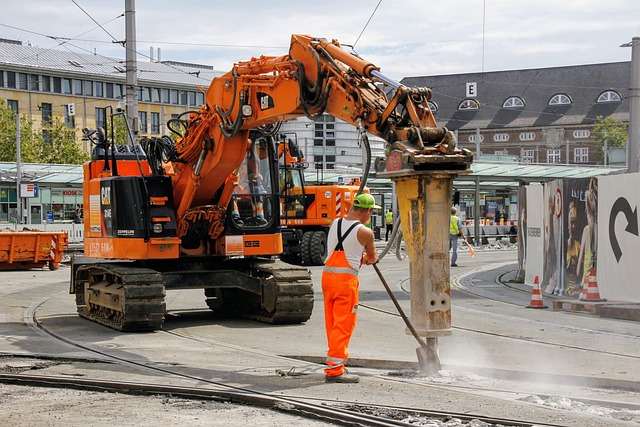Precision utility verification through safe potholing services is crucial for minimizing risks in construction and maintenance projects, especially with growing urbanization and complex underground networks. This process ensures accurate mapping and locating of utilities, preventing damage to vital infrastructure like gas, water, electricity, and communication lines. Safe potholing technologies such as ground-penetrating radar (GPR), ultrasound, and electromagnetic location (EM) enable controlled excavation, reducing accident risks and project delays. By adopting these advanced methods, industries can streamline operations, reduce costs, foster safer working environments, and ultimately revolutionize the construction landscape with enhanced efficiency and sustainability.
In the realm of construction and maintenance, ensuring safety is paramount. This is where Precision Utility Verification (PUV) steps in as a game-changer, especially when it comes to safe potholing services. PUV leverages advanced precision technology to navigate underground utility networks, revolutionizing how we approach construction and maintenance. This article explores the significance of PUV, its safety enhancements, benefits in project management, and future trends, providing valuable insights for construction professionals seeking efficient and secure practices, particularly in safe potholing.
Understanding Precision Utility Verification: The Need for Safe Potholing Services
Precision utility verification is an essential process ensuring safe potholing services in construction and maintenance projects. Potholing, the act of safely excavating and accessing underground utilities, demands precise mapping and locating to prevent damage to critical infrastructure. With increasing urbanization and complex underground networks, reliable safety measures are paramount.
The need for safe potholing services arises from the potential risks associated with inaccurate utility locates. Improper excavation can lead to disruptions in gas, water, electricity, and communication lines, posing hazards to workers and nearby residents. Therefore, precision utility verification plays a pivotal role in minimizing these risks by providing accurate real-time data on underground utilities’ locations, ensuring safe and efficient potholing operations.
How Precision Technology Enhances Construction and Maintenance Safety
Precision technology plays a pivotal role in enhancing safety across construction and maintenance sectors, revolutionizing traditional methods with safer, more efficient practices. One prominent example is the adoption of safe potholing services, which utilize advanced equipment to accurately locate underground utilities before excavation. By precisely mapping these utilities, workers can avoid potentially dangerous encounters with buried pipes, cables, or other infrastructure, significantly reducing the risk of accidents and damage.
This level of precision ensures that construction and maintenance teams can operate with greater confidence, knowing they have comprehensive data on the surrounding environment. Safe potholing services not only safeguard personnel but also expedite project timelines by minimizing delays caused by unexpected utility disruptions. As a result, precision technology fosters a safer working environment, reduces costs associated with accidents and reroutes, and streamlines operations in the construction and maintenance industries.
Benefits of Implementing Safe Potholing Practices in Construction Projects
Implementing safe potholing practices offers significant advantages for construction projects, enhancing overall site safety and efficiency. By employing specialized safe potholing services, construction teams can ensure controlled excavation around underground utilities without causing damage or disrupting essential services. This meticulous approach minimizes the risk of accidents, leaks, and service interruptions during the digging process.
Safe potholing allows for accurate utility location and mapping, enabling precise planning and safe maneuvering around buried assets. It reduces potential hazards like striking gas lines, electric cables, or water pipes, thus preventing costly damage and safety incidents. Moreover, efficient potholing techniques streamline construction timelines, as they facilitate faster excavation and exposure of utilities, leading to quicker project completion without compromising quality or safety standards.
Best Practices and Future Trends in Precision Utility Verification for Construction Professionals
In the realm of construction and maintenance, best practices for precision utility verification are evolving to ensure safety, efficiency, and sustainability. One key practice is adopting safe potholing services, which involve precise excavation techniques to locate and identify underground utilities without damaging them or putting workers at risk. These services utilize advanced technologies such as ground-penetrating radar (GPR), ultrasound, and electromagnetic location (EM) to offer accurate, non-invasive solutions.
Looking ahead, future trends in precision utility verification are poised to revolutionize the industry further. The integration of drone technology for aerial inspections offers a bird’s-eye view, enhancing the speed and scope of utility mapping. Additionally, the Internet of Things (IoT) and smart city initiatives will enable real-time data sharing and monitoring, ensuring better-coordinated maintenance efforts. Moreover, advancements in AI and machine learning algorithms can predict and identify utility assets more accurately, streamlining the verification process for construction professionals.
Precision utility verification, especially through advanced potholing techniques, is not just a trend but an indispensable practice for the construction and maintenance industries. By embracing safe potholing services, professionals can significantly enhance site safety, reduce damage to underground utilities, and streamline project timelines. As technology continues to evolve, staying updated with best practices and future trends in precision utility verification will ensure efficient, secure, and sustainable construction projects.
